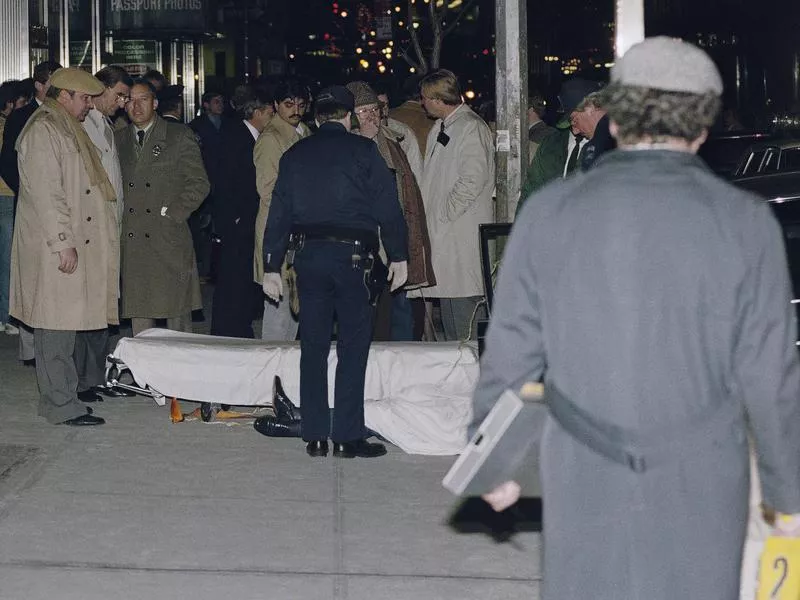
The body of mafia crime boss Paul Castellano lies on a stretcher outside a New York restaurant after he and his bodyguards were gunned down on Dec. 16, 1985, in New York. Mario Suriani / AP Photo
During this time, John Gotti was an underboss. He hated Castellano for a number of reasons, an important one being that Gotti was trafficking heroin and the “deal and die” rule was still in effect. The FBI recorded Gotti talking about how much he hated the new boss of bosses; if that got back to Castellano, it would be a death sentence.
So, Gotti ordered the hit heard around the world — a very public murder of a mafia boss. This was something unheard of, as the murder of any boss needed to pass the mafia commission and required the dark blessing from all five families. Gotti skipped this step.
On Dec. 16, 1985, Castellano and his underboss bodyguard parked their black Lincoln under a “No Parking” sign in front of Sparks Steak House. As they approached the restaurant, four men clad in trench coats opened fire with semi-automatics, plugged six bullets in each man, then retreated to a getaway car. As gawkers started to approach the grisly aftermath, Gotti himself drove by.
The penalty of killing a boss was also a death sentence, but Gotti had politicked his way into the favor of the five families. After denying he had anything to do with the murders and helping install friends in high-ranking mafia positions, he was elected to be the next big Gambino boss.